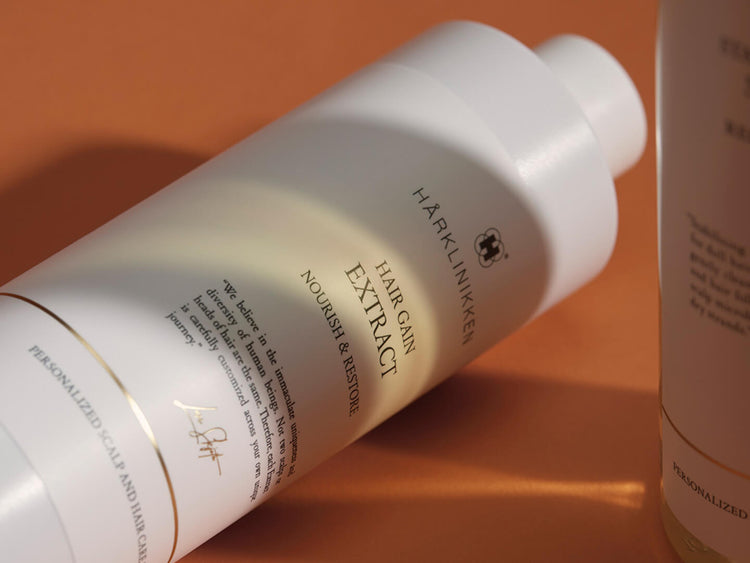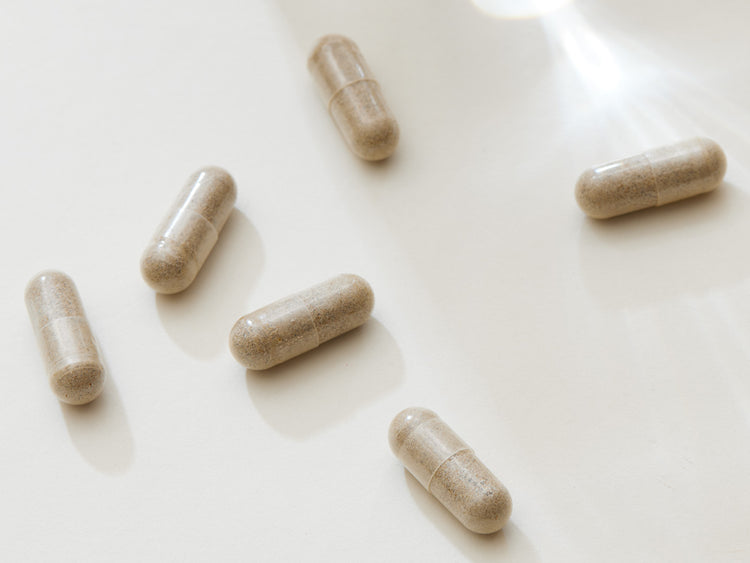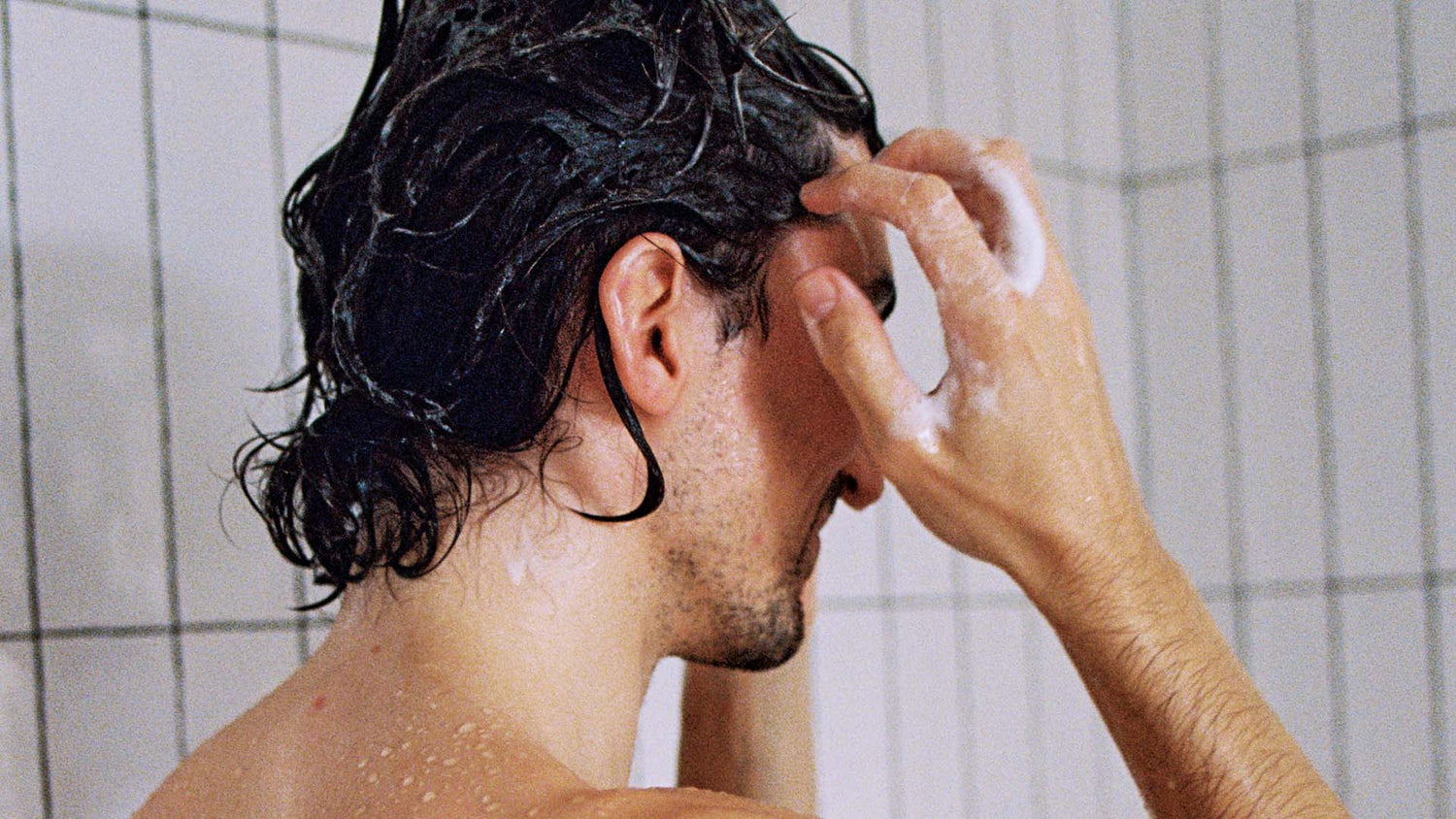Conditioning your strands is a fundamental component of a robust scalp and hair routine. Essentially moisturising agents, conditioners provide the lengths of your hair with nourishment and hydration to improve elasticity and softness and help reduce breakage. But, just like cleansing your scalp, the humble ritual of conditioning your hair can become complicated when wading through fads, trends and myths to select the right method and product for yourself. Founded in 1992, Hårklinikken has over 30 years of research, experience and knowledge powering it – so we spoke with NYC Clinic Director, Sarah Mardis, to answer questions and provide a step-by-step guide for effective conditioning.
What kind of conditioner works best with each hair type?
All hair types need conditioning, albeit in varying intensities.
Straight, fine and oily hair
Our Daily Conditioner is designed to provide necessary reparative hydration and help improve moisture retention, but is lightweight and carefully formulated not to weigh down fine hair.
Wavy and curly hair
While our Daily Conditioner will work for many people with wavy and curly hair, many individuals with dryer strands often enjoy using thicker, richer products that elevate the level of moisture, hydration and nourishment on strands. For those people, we recommend also using our Hair Mask. “Numerous Hårklinikken clients first apply the Daily Conditioner, let it sit for a few minutes, and then apply the Hair Mask on top in order to get the benefits from both products’ ingredients as well as double the hydration,” Mardis says.
Curly, coily and dry or colour-treated hair
For people with curly, coily or dry and damaged hair, the aforementioned potent combination of our Daily Conditioner and Hair Mask will be even more effective. “Some Hårklinikken clients with very dry hair even like to use the ultra-hydrating Hair Mask in place of a regular conditioner,” Mardis says. "Leave it to absorb into your strands for at least three minutes (ideally longer) for best results."
What ingredients should I avoid in conditioners?
No matter what brand you opt for, it’s best to ditch conditioners that have silicones on their ingredient list, as they can make hair appear healthier but ultimately end up coating strands and causing problems in the long term.
We also recommend checking labels for, and avoiding, the following: mineral oils, perfumes, Diethanolamine, Propylparaben, Butylparaben, Isobutylparaben, Methylisothiazolinone, DMDM hydantoin, Coumarin, Geraniol, Octinoxate, Amylcinnamaldehyde, Butylphenyl methylpropanal – just to mention some.
Should conditioner be applied to drenched, wet, or damp hair?
Typically, conditioner is most effective when applied to damp hair because when excess water is squeezed out of your hair the conditioner can do its job and effectively penetrate strands with moisture without simultaneously battling water molecules.
Do I apply conditioner to my scalp as well as my hair?
Because the scalp produces natural oils (known as sebum) it’s not necessary to apply conditioner to the scalp or the hair roots. “We don’t need additional hydration on there because we are already producing what we need at the scalp,” Mardis says. “These oils travel down the hair shaft from the scalp, so we typically recommend applying conditioner from about the top on the ears.” Depending on hair type, the oils move along the shaft differently: they glide easily down straight hair and slightly less smoothly down curly and coily strands. Therefore, some people with textured hair may want to apply conditioner a little higher up.
Should I be combing or brushing conditioner through my hair?
Your hair is weakest when it’s wet, so brushing conditioner through your strands is never a good idea. “The best way to distribute conditioner throughout your hair is with your fingers,” Mardis says. “If you were to use any other kind of tool, I would say maybe use a wide-tooth comb." To achieve even coverage of conditioner, work around your hair in sections, detangling and pressing conditioner into strands with your fingers.
Should I use the bowl method to condition my hair?
Meant to increase the hair’s ability to absorb moisture to create more defined and frizz-free curls, the bowl method is particularly popular with people who have wavy and curly hair. But dunking your head into water several times after conditioning might not be the best approach for everybody and could also mean that you’re using the wrong product. “The bowl method is time-consuming, but also if you need to dilute your conditioner that much it could indicate it’s formulated with the wrong ingredients for you,” Mardis says.
What about the “squish to condish” technique?
The only problem with the “squish to condish” technique (where people apply conditioner and scrunch or squeeze the hair from the bottom) is that the conditioner often only covers the very ends of the strands. “Sometimes people miss the mid-lengths of their hair with this method,” Mardis says. “Then they end wondering why they have frizz or tangles." While there's nothing wrong with squishing or pressing conditioner into your hair, just make sure you’re applying conditioner from the top of the ears downward – not just the ends.
How can I tell if I’m using conditioner wrong?
Because everybody’s hair is unique, experimenting with our hydrating products can be a great way to find the best approach. Some telltale signs you’re not hydrating your hair sufficiently are excess frizz, breakage and inconsistent curl patterns. Over-conditioning can manifest as limp, weighed down or greasy strands. These could all be signals to adjust your conditioning routine and the products you use.
Hårklinikken's Step-by-Step Guide to Correctly Conditioning Your Hair
Step One: Wet Hair
After shampooing with either Balancing or Stabilizing shampoo, rinse out and squeeze out some excess water. It should be wet, but not absolutely drenched.
Step Two: Emulsify
Work a couple of pumps of Daily Conditioner (or Hair Mask) between your hands and apply to the lengths of your hair – from about the ears down.
Step Three: Apply Conditioner and Distribute Evenly
To make sure you’re getting proper coverage, consider applying conditioner in sections – working your way around your head rather than in one go. Rather than simply raking conditioner through your hair, press or squish the product into your strands.
Step Four (Optional): Apply Hair Mask
For people desiring extra hydration, apply Hair Mask on top of Daily Conditioner for even more moisturised strands.
Step Five: Wait
Allow the conditioner (and optional Hair Mask) to penetrate your strands for at least three minutes, preferably longer.
Step Six: Rinse
Rinse your hair thoroughly using lukewarm to warm water.
Extra Tip For People With Very Dry Hair
Before getting into the shower, dampen the lengths of your hair from ears down with lukewarm water. Apply Daily Conditioner and then the Hair Mask over the top. In the shower, wet the top of your hair but hold your conditioned lengths away from the flow of water. Apply Balancing or Stabilizing Shampoo and work it into the scalp. When rinsing out your shampoo, again try to hold your conditioned lengths away from the water. Then, once your shampoo is rinsed out, go ahead and rinse the conditioner and mask out. This technique results extra hydrated hair.

Unsure where to start?
We only accept candidates who we believe we can help, which is why our online Hair Assessment is the best place to start. Based on your results, you will either qualify for immediate treatment or we will organize a consultation.






